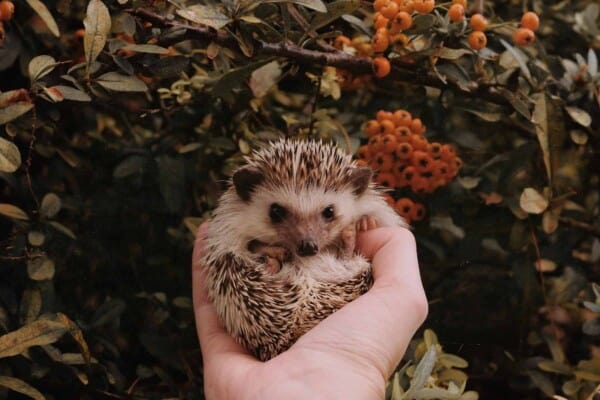How do you create the perfect cage setup for your guinea pig to be both safe and entertained? In this thorough guide, we will have a look at all the options for your furry critter to thrive in its environment. Find out about the best type of cages to use, how to make your own on a budget, and the type of accessories you can put inside the cage that will make for a happy guinea pig.
What type of cage should I use for my guinea pigs?
The number of Guinea pigs that you own will be what determines the type of cage and the cage size – the more pigs that you raise, the larger the cage must be. As a starter size for a single guinea pig, you will need 7.5 square feet, which is a cage that measures 30 x 36 inches in all.
For two pigs, this cage should be 30 x 50 inches (7-5 to 10-5 square feet), and 30 x 62 inches for three guinea pigs. In general, you should add one square foot of space per guinea pig. This gives them enough personal space to not feel too crowded.
If you own more guinea pigs, you need to have a cage long enough to support having a herd. If your cage design is modular, it could be L-shaped to fit into a corner of a room.
Bar spacing
Most cages have a general spacing that is three-quarter inches wide between the thinnest bars. Some cage manufacturers will have larger spacing that is one-inch squares.
The spacing on the floor bars can be an issue, so the floor will need to be covered with cardboard if you buy a standard cage. Health issues such as bumblefoot come from exposed cage floors that are soaked with moisture and bacteria.
Materials used
The better material to use for cages should be metal with very few wooden accessories. Wood is fine for certain cage items and needs to be unpainted edible woods that are low in sap content. Plastic materials are problematic since a guinea pig will chew on these materials.
One good alternative would be C&C cages which could be a better habitat for them. These are cage walls that provide customizable enclosures that can be increased or decreased. The floor is often constructed from canvas material that is coated to prevent moisture problems.
Bedding
There are a lot of materials that could be used as liners for a guinea pig cage and are cheap to buy. Wood shavings are great to cover smells and are quick to absorb liquids to a degree, but these may bring some health issues.
The best material that should be used as a liner is fleece pads. Underneath these pads, you can place puppy pee pads that absorb and lock in liquids without much smell. While the pee pads can be tossed out after a week, the fleece pad should be washed using detergents that don’t have a heavy scent.
Consider hand washing instead of using the washing machine, so it doesn’t destroy your fleece. If you can use an iron to flatten the fleece, this will help it lay down in the cage easier.
Levels and platforms are not needed
Guinea pigs don’t like separate levels and platforms so much. While they do like areas they can explore to spark their curiosity, these should be ground-level setups. If you do add an easy-to-access platform, you could integrate a rest area or hidey house.
Spacers and dividers are problematic since they reduce the amount of exercise room that is essential to their health. At least a large section inside the cage should be obstacle-free so they can enjoy instant bursts of running space whenever they want.
How to make a guinea pig cage that won’t break the bank
You can create your own guinea pig cage if you are on a budget. A cage that is better suited to guinea pigs is a cage that removes any kinds of platforms or upper levels since it can be a danger if they fall from any kind of second-floor level.
Another ideal thing is making a cage that has no covering on the top so you can get to your guinea pig easier. They are not the kind of animal that is going to climb the cage to try getting out. As long as they have a large roaming area, this is going to give them enough space to zoom from one end to the other.
Try finding a cage that has good length for this very reason. Modular cages that have walls you can add are better for guinea pigs. You can add more walls as you go, which is better than buying a cage that cannot be modified.
Accessories you can put inside your guinea pig cage
Food bowls
Because your guinea pig is so skittish, they tend to bolt away in all directions at a moment’s notice. This means that your food bowl needs to be tip-proof if they bump into it. Many food bowls are built into hay feeders that are anchored onto the cage wall.
Other feeders are enclosed buckets that dispense hay, veggie snacks, and pellets that are suspended from the roof of a cage. Even if they bump into these cages, the food won’t fly everywhere as a result. Standing food bowls should have a wide and flat base that is tip-proof.
Water dispenser
Your guinea pig will like to drink water from a bowl rather than a feeding bottle. This is because these little critters like to forage all the time and they will be lazier about drinking water. You can add a water bottle, but unless they learn to use it often, they will prefer a water bowl more often.
Fleece blanket and beds
The average fabric that is used for pets like dogs and cats could be a danger to your guinea pigs’ health. Chewing on fabric can tear away threads that can be ingested. This can clog the intestines of a guinea pig and require surgery to remove the blockage.
For this reason, it will be better to use fleece as a substitute because it contains no threads and is compacted fiber. If they do chew it, it won’t cause nearly as many problems as fabric would.
Safe woods
You need to avoid wood that is high in sap content including cedar and pine. Everything else is considered safe for them to chew, like oak and maple.
Hardwood is going to be the healthier option, so any of their chew toys and cage structures should be made from it. Apple and cherry wood sticks make excellent chewing snacks for them too. Just be careful what chew toys you buy by checking what wood is safe for them to chew.
What type of toys is good for guinea pigs?

Hidey house
A hidey house is part of a game that more than one guinea pig will enjoy with their partner. They will storm into these hiding spots and run to the other end of the cage. There can be several hiding spots that will continue this game of ‘hide and seek’ for hours.
A hidey house needs to have at least two entrances so they can go inside and leave in a hurry. You can make one from a cardboard box or from a wooden structure. Don’t use plastic since this material can be chewed and become a choking hazard.
Exercise wheel
An active guinea pig will love running on the exercise wheel, but it needs to be the right kind of wheel for them. They should be enclosed wheels that are not easy to fall out from.
Angled plate running wheels are a hazard to your guinea pig since the gravity and angle can cause them to slip off too quickly. The running wheel tubes should be hung on their cage wall in an area that does not limit running space. The best spot to place this wheel is on one side of the long end of your cage.
Exercise ball
Just like a hamster ball, there are larger roaming balls meant for guinea pigs. These are perfect for letting a guinea pig roam around your home without fear they will get lost easily. It’s also great for running exercises.
Exercise balls are best used outside of the guinea pig cage and should always be supervised. You shouldn’t keep them in the exercise ball for too long since they will get tired very easily.
Where should I place the cage in the house?
Guinea pigs like a room that is nice and quiet, so it makes it a harder task to decide which room gets the least amount of second-hand noise. The best spots are usually in a basement where the sound is less of a problem.
People who live in the suburbs will be dealing with less noise than in big city centers. Your guinea pig is overly sensitive to everyday sounds and can get stressed out equally from honking horns and creaking floorboards. If you have to soundproof the walls, this might be an option you could ultimately consider.
Temperature and humidity
A guinea pig is very easygoing when it comes to room temperature. The target you want to have is between 65-75 degrees Fahrenheit. The humidity should be between 40-70% with a sweet spot being 55-60% humidity in general. Even if guinea pigs can stay outdoors for a short period of time when the weather is pleasant, they cannot be kept outdoors or in damp rooms such as a cave or cellar.
Dramatic shifts in heat and cold are going to make your guinea pig uncomfortable and act erratically. The heat will cause them to shed their fur suddenly, while cold weather could make them prone to illness. If you have temperature control in your home, give your guinea pigs the right amount of comfort they need.
How often should I take my guinea pig out of its cage?
You should handle your guinea pigs for at least one hour each day to keep them familiar with your presence. The longer you go without picking them up will un-train them (or they simply forget), so they will be more rambunctious. Even not handling them for a week can cause them to show antisocial behavior.
If you have raised your guinea pig since the first 6-8 weeks of age, they will be more accustomed to being handled. This is fine if you have their trust and picking them up won’t result in poor behavior including being peed or pooped on. It’s best if you start handling them when they are young so they learn your smell and get used to it. Also, try to handle them outside their normal sleep schedule to avoid being bitten by a grumpy guinea pig.
How often do I need to clean the cage?
You will need to clean a guinea pig cage once a week to keep the odor and urine smell to a minimum. Pee pads (used for house-training puppies) work great to absorb urine effectively.
The cage walls should be washed off at least every six months to remove any build-up of urine splashing. It won’t be as important as cleaning the bedding but is necessary to keep odor down and harmful bacteria to a minimum. Health issues such as bumblefoot and eye problems are reduced by cleaning each week.
Should I cover my guinea pig cage?
It’s important not to cover your guinea pig’s cage because it is making them more nervous. Since they are already fur-covered, it won’t take long before they are overheated and this can cause immediate stress. It’s also bad for them if they get a hold of the fabric and start to gnaw on it, which might block their intestinal tract.
Can you put guinea pigs with other animals inside the cage?
Guinea pigs only welcome other pigs and that’s about as tolerant as they get. As far as hamsters and rabbits living in the same cage, it just doesn’t work out very well. Other rodents won’t be able to socialize with them or be bullied for not being the same size.
Where can I find some cool guinea pig cage setup ideas?
There are specialized sites including Pinterest and DIY-Wiki sites. You can also search on Instagram using hashtags like #guineapigcage. I personally recommend Google search for the image results that come up. It’s enough to get basic ideas that you can put together as a collage. Another good source is Youtube since the DIY videos are showing you step-by-step instructions and ideas on cage design.
Contents
- What type of cage should I use for my guinea pigs?
- How to make a guinea pig cage that won’t break the bank
- Accessories you can put inside your guinea pig cage
- What type of toys is good for guinea pigs?
- Where should I place the cage in the house?
- How often should I take my guinea pig out of its cage?
- How often do I need to clean the cage?
- Should I cover my guinea pig cage?
- Can you put guinea pigs with other animals inside the cage?
- Where can I find some cool guinea pig cage setup ideas?













